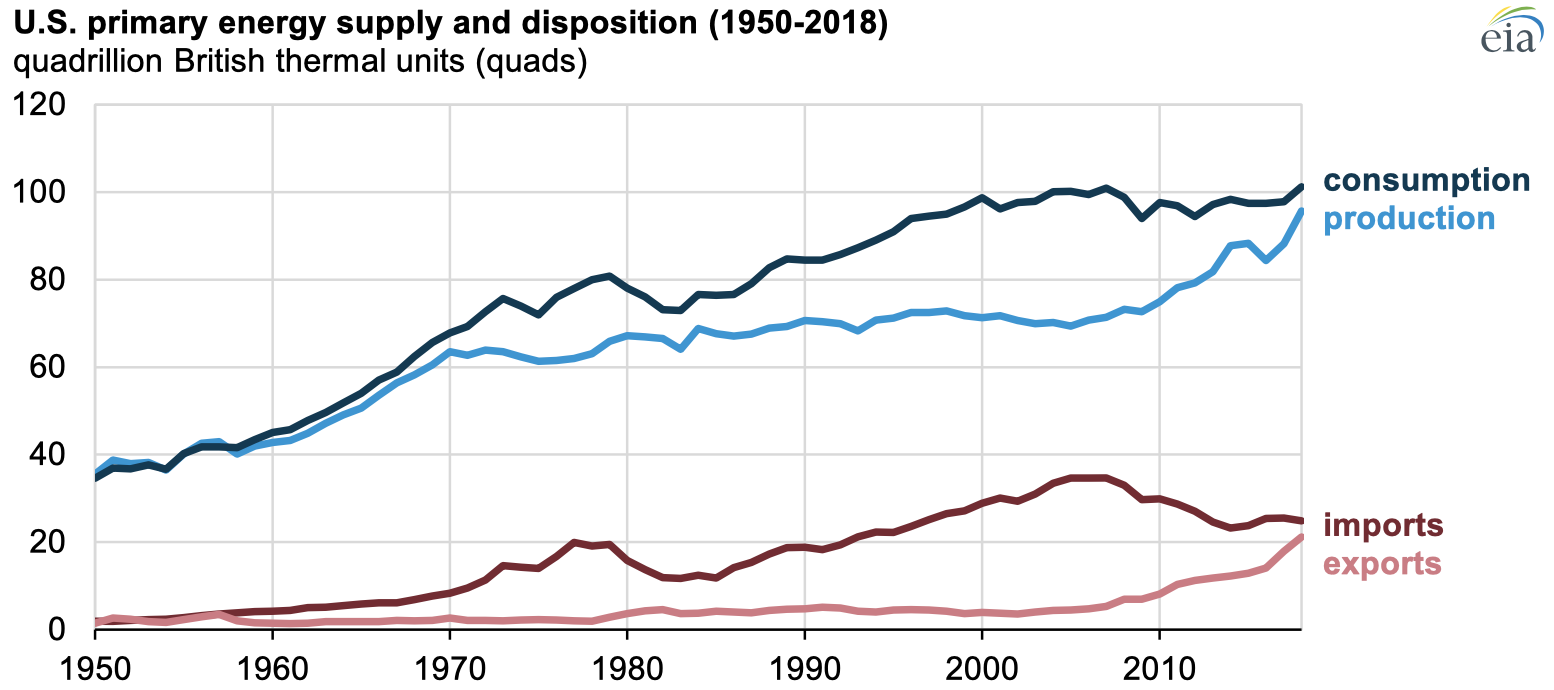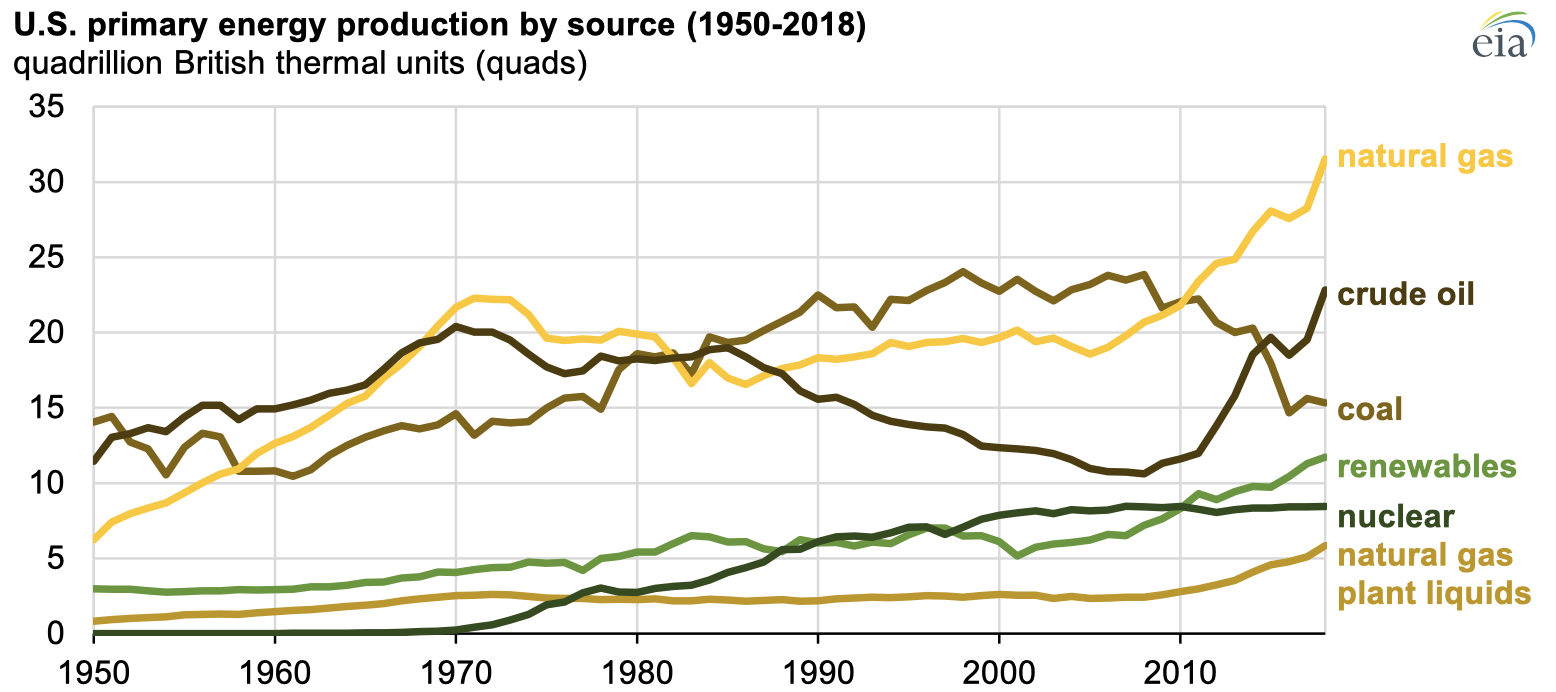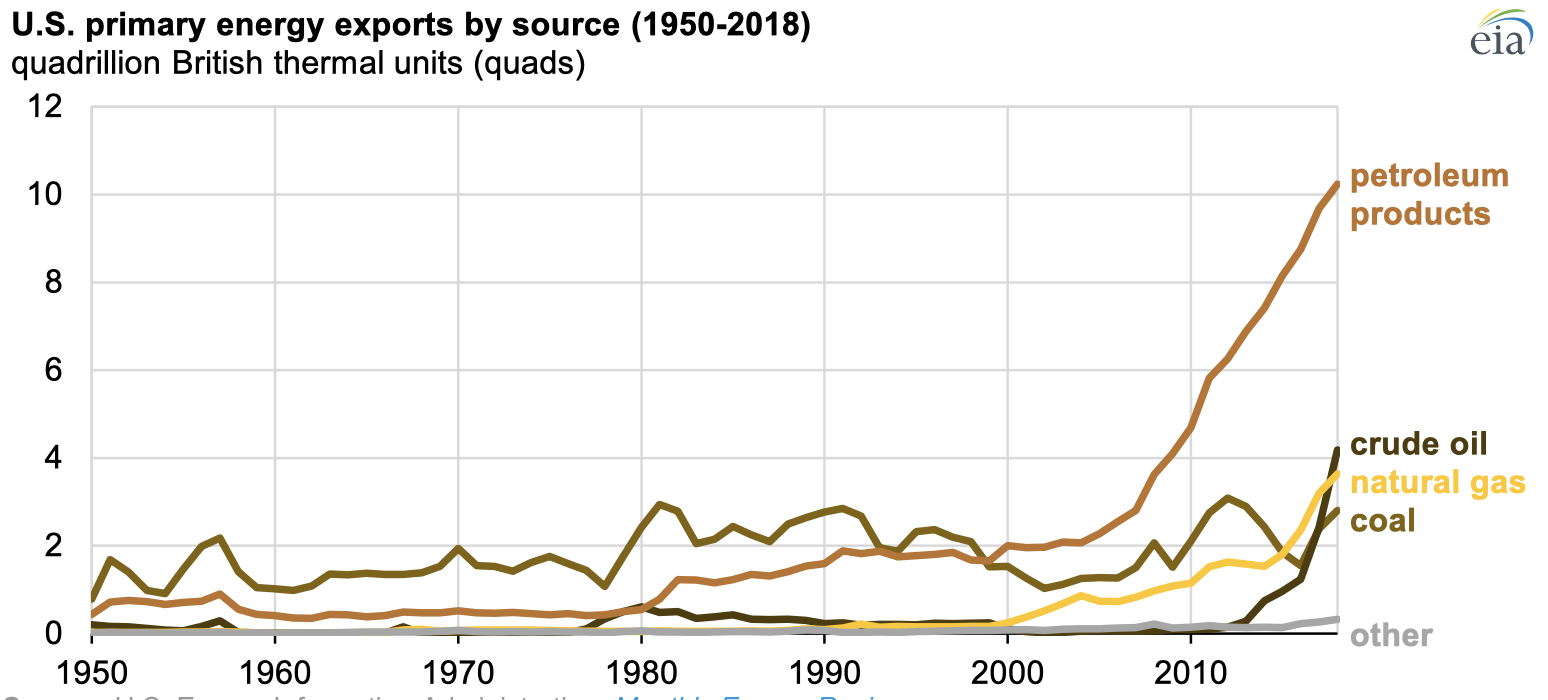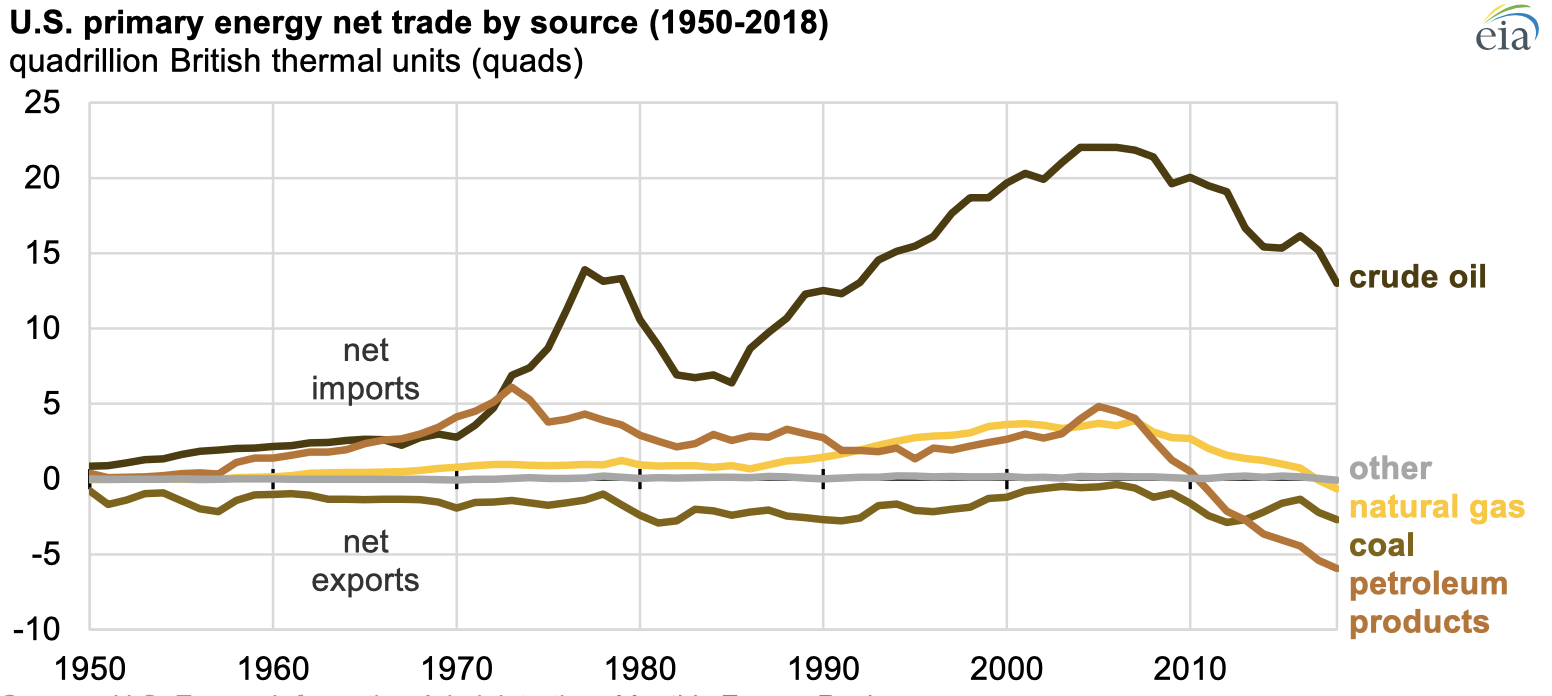The United States produced a record amount of energy from various sources in 2018, reaching 96 quadrillion British thermal units (quads), an 8% increase from 2017. This increase in production outpaced the 4% increase in U.S. energy consumption, which also reached a record high of 101 quads. At the same time, U.S. energy exports increased 18% to a record high of 21 quads in 2018, reducing net energy imports into the United States to a 54-year low of 4 quads, or less than 4% of U.S. energy consumption.

In 2018, crude oil and natural gas accounted for 57% of all U.S. energy production, with crude oil production seeing an increase of 17% and natural gas an increase of 12% from 2017. Natural gas plant liquids production also increased by 14%. Energy production from renewable energy increased 4% from 2017, mostly because of growth in solar (22%), wind (8%), and biomass energy (2%). Nuclear electric power production remained virtually unchanged in 2018. Coal was the only energy production source to decrease in 2018, falling 2% from 2017 levels.

Total U.S. consumption of energy also increased from 2017 levels but at a slower pace than production. Compared with other fuels, petroleum had the largest gap between growth in production and growth in consumption in 2018. The 17% increase in crude oil production outpaced a modest 2% increase in total domestic petroleum consumption, resulting in a 73% increase in exports of crude oil and a 6% increase in exports of petroleum products in 2018 compared with 2017.

Exports of crude oil and petroleum products made up 68% of all U.S. energy exports in 2018, accounting for most of the increase in total U.S. energy exports from 2017. Petroleum product exports reached a record-high 10.2 quads, or 5.6 million barrels per day. Crude oil exports nearly doubled and reached a record-high 4.2 quads (2 million barrels per day), surpassing both coal and natural gas on an energy equivalent basis to become the second-highest U.S. energy export. Exports of natural gas and biomass energy (e.g., ethanol) also reached new records in 2018, and coal exports reached its highest level since 2013.

In 2018, U.S. energy imports decreased 2% compared with 2017, which, along with record-high energy exports, brought combined net U.S. energy imports to their lowest levels since 1964. In 2018, the United States was a net exporter of coal, coal coke, petroleum products, natural gas, and biomass energy. The United States remained a net importer of crude oil, which has been true for every year since 1944. However, in 2018, net imports of crude oil reached its lowest level since 1991.
Principal contributor: Bill Sanchez

Follow us on social media: